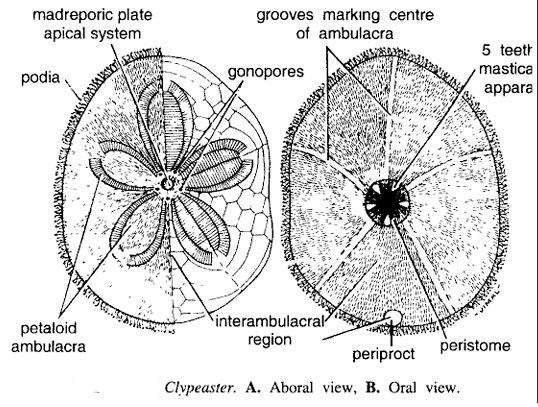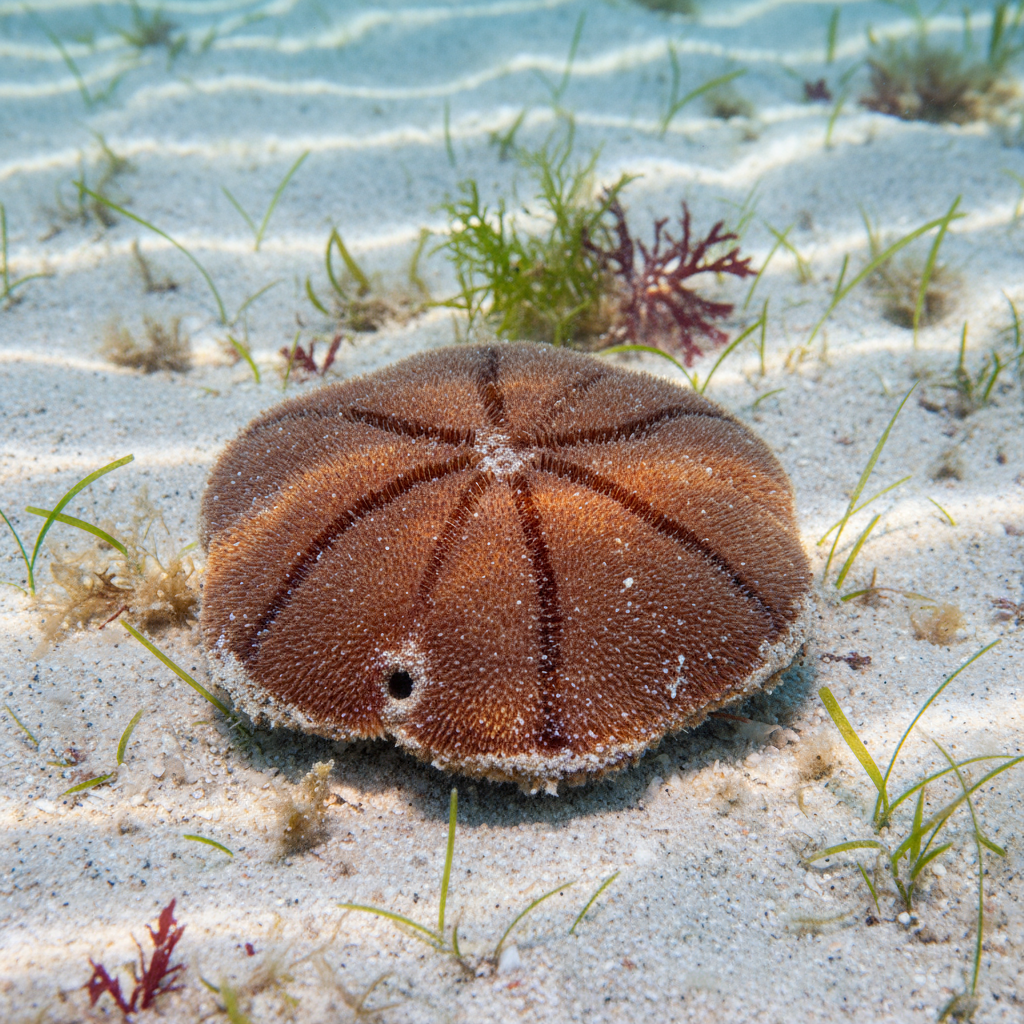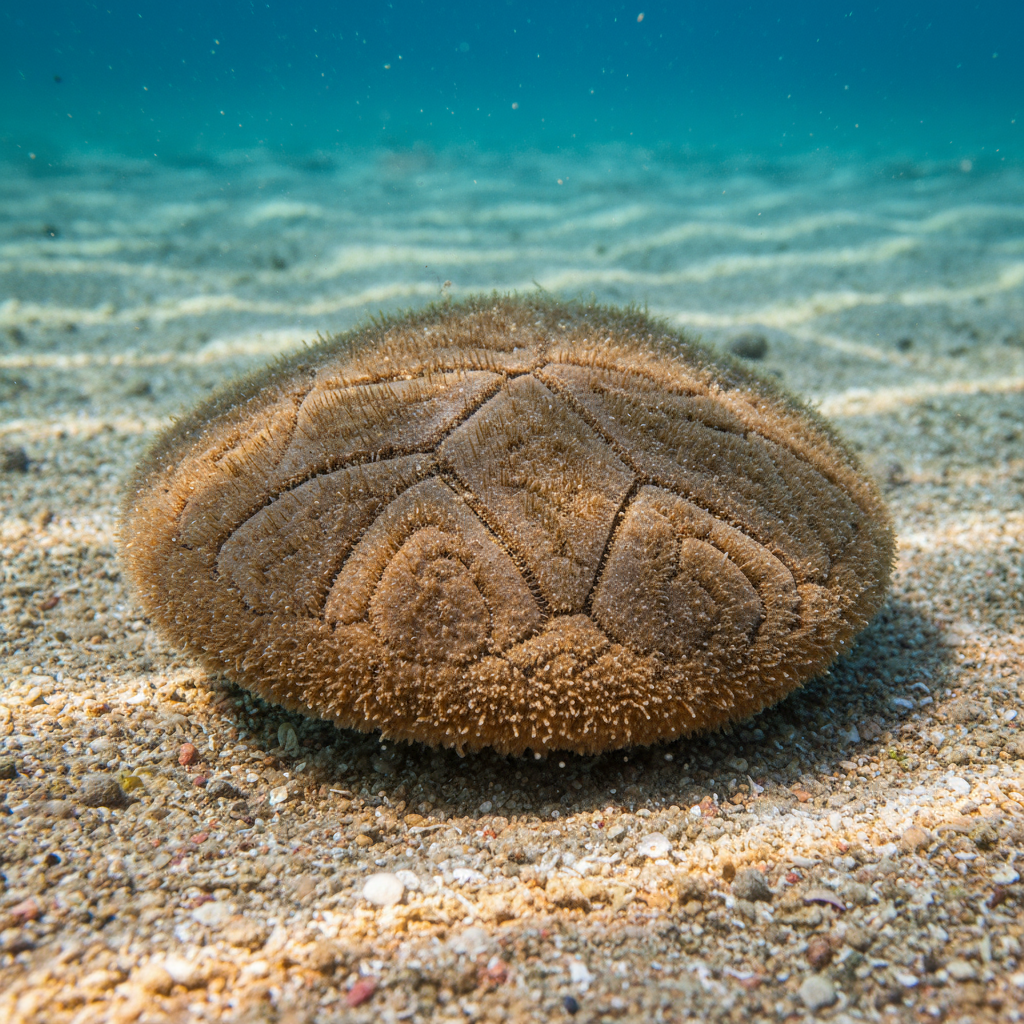Clypeaster: Detailed Overview of the Sea Biscuit Genus
Clypeaster is a genus of echinoderms known as sea biscuits, belonging to the order Clypeasteroida. These marine animals are closely related to sand dollars but distinct due to their thicker, more inflated body and pentagonal shape. Sea biscuits are adapted for life in shallow, sandy marine environments where they play vital roles in sediment turnover and benthic ecosystem dynamics. Their unique body structure and feeding adaptations make them important subjects for marine biological study.
Classification of Clypeaster
| Taxonomic Rank | Name | Characteristic |
|---|---|---|
| Kingdom | Animalia | Multicellular, heterotrophic marine organisms |
| Phylum | Echinodermata | Marine animals with radial symmetry and calcareous skeleton |
| Class | Echinoidea | Sea urchins and related species with spiny, rigid tests |
| Order | Clypeasteroida | Flattened, disc-shaped echinoids with petal-shaped ambulacra |
| Family | Clypeasteridae | Robust, thick-bodied echinoids known as sea biscuits |
| Genus | Clypeaster | Oval to rounded sea biscuits with petal-like pattern on the test |

Habitat and Habit
Clypeaster species inhabit shallow, sandy, or muddy seafloors, as well as seagrass beds, primarily in tropical and subtropical coastal waters. They are benthic and spend much of their lives burrowing within sediments or crawling just beneath the surface. Their dense covering of small spines helps them move through substrate efficiently.
These sea biscuits feed by sifting organic matter and detritus from the sand through their ciliated tube feet and a small mouth located on the underside. Their burrowing behavior aids sediment aeration and nutrient cycling.
Geographical Distribution
The genus Clypeaster is widely distributed in tropical and subtropical marine regions, including the Indo-Pacific, Caribbean, Western Atlantic, and coastal areas of Australia and Southeast Asia. They are commonly found in shallow waters from intertidal zones to depths of around 30 meters. Certain species like Clypeaster subdepressus are well-documented across the western Atlantic coastline.

General Characteristics
- Commonly called as cake urchin. Body is flattened and is exhibiting bilateral symmetry.
- Test is more or less round in outline and is covered with thick and short spines.
- Body differentiated into oral and aboral surfaces.
- Shell more or less five sided, each petaloid area being wide and well marked and each pair of ambulacral.
- Aboral surface is slightly convex. Aboral ends of 5 ambulacral areas are bordered, each by two rows of flattened, respiratory tube feet, which are arranged in such a way that they appear like petals of flowers and are hence called as petaloids.
- Madreporite is placed at the centre of the aboral side, from which radiate five petaloid ambulacral areas which are clearly seen.
- Between two petaloid is interambulacral area. Oral surface is flat and covered by a dense velvety coat or short spines and pedicellariae.
- Mouth lies in centre and communicates with 5 simple groove along the centre of the ambulacral areas.
- Anus or periproct oral. Around mouth is 5 teeth of masticatory apparatus.
- Ambulacral groove is clearly seen.
- At the beginning of each ambulacral area near the peristome there exist two sphaeridia which are immovable and devoid of nerve ring. Genital plates are fused with the central pentagonal plate.
- Radial ocular plates are distinct.
- Development includes echinopluteus larva.
- Body Shape: Usually oval or pentagonal, moderately inflated, and flattened.
- Test: Hard, calcareous skeleton featuring five distinctive petal-shaped ambulacral areas with pores.
- Spines: Small, velvety, and ciliated, adapted for burrowing and movement.
- Mouth: Located ventrally with a modified Aristotle’s lantern jaw for grinding organic matter.
- Tube Feet: Protrude through petal grooves and assist with respiration and feeding.
- Coloration: Typically muted browns, tans, and creams, often mottled for camouflage.
- Size: Adults range from 7 cm to over 30 cm in diameter depending on species.
Special Features
Clypeaster species are equipped with specialized adaptations such as a robust test suited for sheltering soft internal organs against sediment pressure. Their petal-like ambulacral areas are designed to increase surface area for tube feet, enhancing gas exchange in low-oxygen sediment environments. They also exhibit the ability to rapidly rebury themselves when exposed, a vital defensive behavior for survival.

Behavior and Ecology
Sea biscuits are essential sediment bioturbators, reworking the substrate and enhancing ecosystem health. Their feeding activities recycle nutrients and help prevent organic matter buildup. Their burrowing creates microhabitats for smaller organisms and improves substrate stability.
Clypeaster reproduce sexually by broadcast spawning, resulting in planktonic larvae that eventually settle into benthic juveniles. They contribute to maintaining balanced benthic communities and serve as prey for fish and other marine predators.
References
- Animal Diversity Web – Clypeaster subdepressus: https://animaldiversity.org/accounts/Clypeaster_subdepressus/
- Wikipedia – Clypeaster: https://en.wikipedia.org/wiki/Clypeaster
- Enature Qatar – Clypeaster humilis: https://www.enature.qa/en/specie/clypeaster-humilis/
- Vedantu – Sand Dollar Overview: https://www.vedantu.com/animal/sand-dollar

